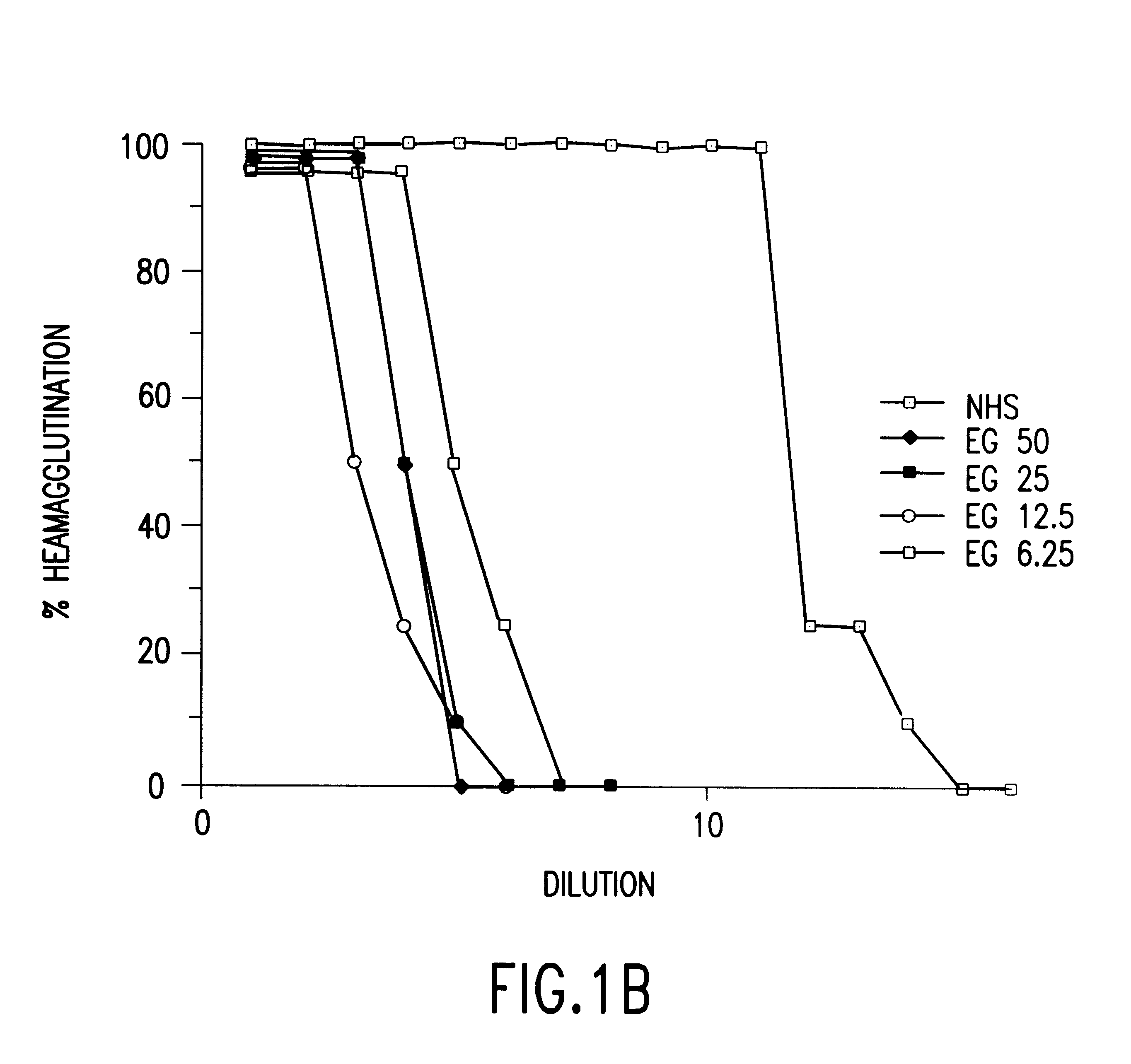Cells expressing an alphagala nucleic acid and methods of xenotransplantation
a technology of cell expressing alphagala nucleic acid and xenotransplantation, which is applied in the direction of biocide, genetic material ingredients, antibody medical ingredients, etc., can solve the problems of difficult enzyme treatment approaches, difficult to achieve, and high cost of enzymes, so as to reduce the human immune system response and reduce the human immune system. the effect of respons
- Summary
- Abstract
- Description
- Claims
- Application Information
AI Technical Summary
Benefits of technology
Problems solved by technology
Method used
Image
Examples
Embodiment Construction
The present invention involves the design, construction and use of transgenic cells, tissues, organs and animals which express functional carbohydrate epitope-modifying genes which direct the expression of gene products, including but not limited to, enzymes, capable of modifying, either directly or indirectly, cell surface carbohydrate epitopes such that the carbohydrate epitopes are no longer recognized by either natural human antibodies or the human cell-mediated immune system, thereby reducing the human immune system response elicited by the presence of such carbohydrate epitopes, relative to the response elicited by the presence of the unmodified carbohydrate epitopes.
The following aspects of the invention are explained in the subsections below, solely for properties of description, and not by way of limitation: carbohydrate epitope-modifying gene sequences, and vectors and promoters which can be used in conjunction with such sequences for the construction of transgenes, includ...
PUM
| Property | Measurement | Unit |
|---|---|---|
| α-Galactosidase | aaaaa | aaaaa |
| α | aaaaa | aaaaa |
| fluorescence | aaaaa | aaaaa |
Abstract
Description
Claims
Application Information
 Login to View More
Login to View More - R&D
- Intellectual Property
- Life Sciences
- Materials
- Tech Scout
- Unparalleled Data Quality
- Higher Quality Content
- 60% Fewer Hallucinations
Browse by: Latest US Patents, China's latest patents, Technical Efficacy Thesaurus, Application Domain, Technology Topic, Popular Technical Reports.
© 2025 PatSnap. All rights reserved.Legal|Privacy policy|Modern Slavery Act Transparency Statement|Sitemap|About US| Contact US: help@patsnap.com



